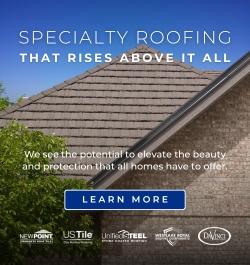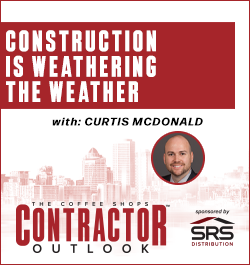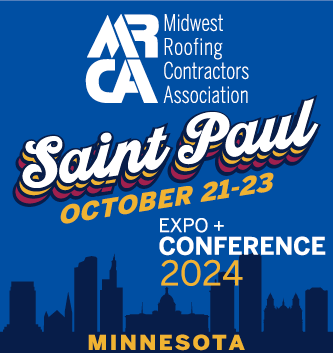Cold roof in Kalamazoo
« Back To Roofers TalkHey, my brother showed me how to upload more pictures. You guys are in for it now. I can do it myself! We did this spring; an old cape cod with the multiple attics and a lot of ice build-up in the winter. We tore it off and installed new framing over the old roof and then vented it. You can see the openings on the bottom to let the air in and then the ridgevent opining in the top. Look at the last picture of the job the old roofers did on cutting in the ridgevent! A BFH if I ever saw one.
http://picasaweb.google.com/crookston.john4/ColdRoofInKalamazoo?authkey=Gv1sRgCOTnivPelaiZGg#>>>
We will probably be starting on Tuesday the 8th, you could come up late that day and stay the 9th to work with us. Long trip back for the 10th though. Let me know what you want to do. OS>>>
When are you going and when will you get back? I think I have another big job that is going to go also. Same principle, but not on a cape cod like your house. I could show you how to build a cold roof on the big job and then show you the pictures and such from the house we will be doing soon.
Maybe we can take a bunch of pictures and then share them with the rest of the bunch here on the coffee shop. A before, during and completed sequence. Mike from NZ does a nice job of that and I think the bunch would be interested. John aka Old school>>>
Going to the continent! Wow!>>>
Twill, Hey, we recieved the contract for that one in the mail today. It is tenatively scheduled for the week after labor day. Does that fit into your schedule? Give me a call. Old School>>>
Well said Pgriz!>>>
Tom, you give me more credit than I think I deserve. I can tell you what has worked for us, but keep in mind it continues to be an evolving body of knowledge/experience. So far (knock wood), none of the installations we have done in the manner described had problems, but you never know if you just got really lucky, or you actually have figured it out. We finished two jobs this month with the additional ventilation, and have another three to do this month.
I'm bidding on one that the homeowner is planning to redo, but she's been taken advantage of by other roofers before, and she's a little gun-shy. We've been referred to her by another roofer, and the reference checks she did on us were good. 100-year old house, no vapor barrier to speak of, cheap steel panels (screw-through) on top of old metal shingles, original decking, a mixture of various insulations, no ventilation. The roof leaks, regularly, and all the hot-shot roofers she's hired over the years have not stopped the water. She's thinking of tearing the whole roof off and starting over. But she doesn't have the cash to do it. So... what's the best that we can do with the funds she has available. So, we're trying to get "what's possible" and "what's needed" to overlap.
As for your situation, if you're thinking of 2x2 sleepers, why not upgrade that to 2x3 and then you have 2.5" of air channel? At the bottom, you may want to extend the sleepers past the current fascia to create a new fascia, then remove the decking over the eave space, and install new soffits spanning the new open eave area. At the top of the ridge, I'd suggest removing the decking from the top as usually there's a small attic up there, to create a mixing chamber, then install either good ridge vents or a vent like a Maximum. With this approach, you get good soffit intake, a good air channel, and a good exit (with mixing between the individual air channels at the top plenum).>>>
That is why we are all here. No one knows as much as everyone!>>>
Hey, you can call me if you would like. A couple of reasopns to do it the way I did. There was some swail in the roof and I was able to take it all out with the 2x4's on edge. We pulled a line on the top and bottom to get it straight and then pulled a line up and down from these points to make sure there was no sag in them. The finished product is straight and level within 1/8 of an inch. Very nice.
I know that 2"s should work, but that is two different layers also. Why not just use one layer to do the whole job. I am figuring a couple of the same type of jobs right now. Maybe if I get one or both you could come up and meet me and I could show you what we do and why. I do know that it cures a lot of problems all at once. I am not that far away from you. 1-269-806-1266>>>
Twil, On the front of this one we cut out the old soffit and then install a new fully vented aluminum soffit. The air flows from this new soffit directly into the area between the new 2x4's. We sprayed urethane insulation to the bottom side of the old roof at this point, so there is no air getting into the first of the old attics. on the back side of the roof, they had a flatter deck. We extended the roof rafters 6 inches and then installed the vented soffit. We also blew celulose insulation into the old attic space so that there was at least 9" total everywhere. we cut holes through the old plywood and let the air flow where ever it wanted to, but the ridgevent was at the peak obviously and the air flow is from the soffit to the peak. We left the old roof louver holes and such right in the old roof as we built a new rafter structure right over it. At the higher points, it all becomes one attic.>>>
If the air is blowing "IN" the vents, that is the path of least resistance. Air is lazy and it will do that. The path of least resistance MUST be from soffit to peak. The only time you might want air to be moving out of the soffits is if you have a whole house fan and it is turned on sucking the air from the house and into the attic. The attic will be presurized and the wir will flow out any way it can. This is a good thing.>>>
Vents, as in roof vents? We used to use coravent and we had troubles with piles of snow building up beneath the ridges because just that thing was happening; no external baffle. I aggree that the best way is to just raise the roof to get the total ventilation thing going, but the proper vents properly installed work quite well. When we install them on a retwo fit soffit installation, we will push the insulation back away from the soffit before we insert them. I don't like the insulation touching the bottom of the roof as it does transfer the heat to the deck.>>>
If the proper vents are not working to expectations, I would suspect that the intake is not equal to the outlet. When we do the cold roof, we always cut out the soffit and clear out the insulation. We will always install a fully vented aluminum soffit system. The aluminum perforated has twice the net free area as the vinyl soffit system. 5% for the vinyl and a bit over 9% for the aluminum. If it an't "breath" in, then it can't "exhale" out. We always use the Air Vent II also. It has the external baffles that draw the air out when the wind blows. The Cora Vents and the Cobra Vents will stop venting when the wind starts to blow because they don't have a baffle. It creates a negative pressure at the ridge and it will cause the air to be drawn out of both sides of the ridge.l Very important.
There are no irelavent details! When everything is installed properly and the system is balanced, it is a thing of beauty.
Woody, If you look at one of the first pictures, you will see that we installed a 2 x 6 up the rake. We bent a special piece of fascia for it so that it "stepped" out beyond the old fascia. With that detail, instead of looking like it is a really wide fascia it gives it some depth and another horizontal line. It looks very nice. I will try and go by and take another picture or two of it for you. We finished it about 2 months ago.>>>
Twil, what Pgriz said! We could have made it 2 " if we had laid a 2 x 4 on the flat and added a piece of OSB over the top for the 2" but this was simplier. It is also easier to fasten the 2x lumber to the old structure this way. We nail the 2 x cleats to the roof after extablishing a square line up and down. We strike lines to mark one side of the rafters on either 16 inch or 24 inch centers and then nail the cleats on on alternating sides; that way we can keep the new rafters dead straight and nail them from the side every 3 or 4 feet. We pull a string along the bottom and top to make them all level and then we pull a string from top to bottom to make sure there is no bow to the new rafters. This roof was 2 inches out of square and we were able to straighten everything out. It is easier to pull all the lines and straighten when the boards are vertical instead of lying flat.
When we are finished, we basicly have a 3 1/2 inch "attic" that is venting continously; all the time. we also leave gaps between the ends of the rafters if they are longer than 16 feet so that the air can flow sideways if it wants to. We don't restrict it in any way. The proof is in the pudding as they say. We have done many like this and NONE of them have any ice buildup. Paint peeling stops and so does any mold accumulation. Most peoples initial thoughts when the price of energy goes up is exactly the opposite of what should be done. Proper ventilation with proper insulation is the key to stopping all of the miriad of problems we are running into.>>>
Tom, fluid flow near the edges is slowed by friction with the edge. The fluid further away from the edge is slowed down proportinately less (but I am not sure if the relation is linear or a power curve). The larger the open space, the less resistance to flow there is for a given fluid. It has been determined through tests, that air flow in a typical roof environment needs at least two inches for the flow by convection to occur to a reasonable degree. Therefore, the code (at least the Canadian one) requires a minimum channel height of two inches. So, the air channels with heights of 3.5 inches will conduct more air with less resistance than a similar channel of 1.5 inches.>>>
pgriz and Mike. You are both right. It works like a charm when done correctly, and it doesn't come cheap. As long as the air is flowing, the house will be in balance and nothing bad will happen to the wood or the structure. Balance is the key. If you restrict the air movement, problems will appear somewhere in the structure. There were a lot of problems in the past 20 years here in the States with homes with the Drivit system exterior finish. Most of them were caused by a lack of flashing details at windows and doors. The "hard" stuff to do.
We do quite a bit of the "cold roofing" in rehab situations when people are tired of just putting on another layer and getting nowhere. It helps a lot to be a good carpenter as well as a skilled roofer. You can see the whole picture.>>>









-2.png)










